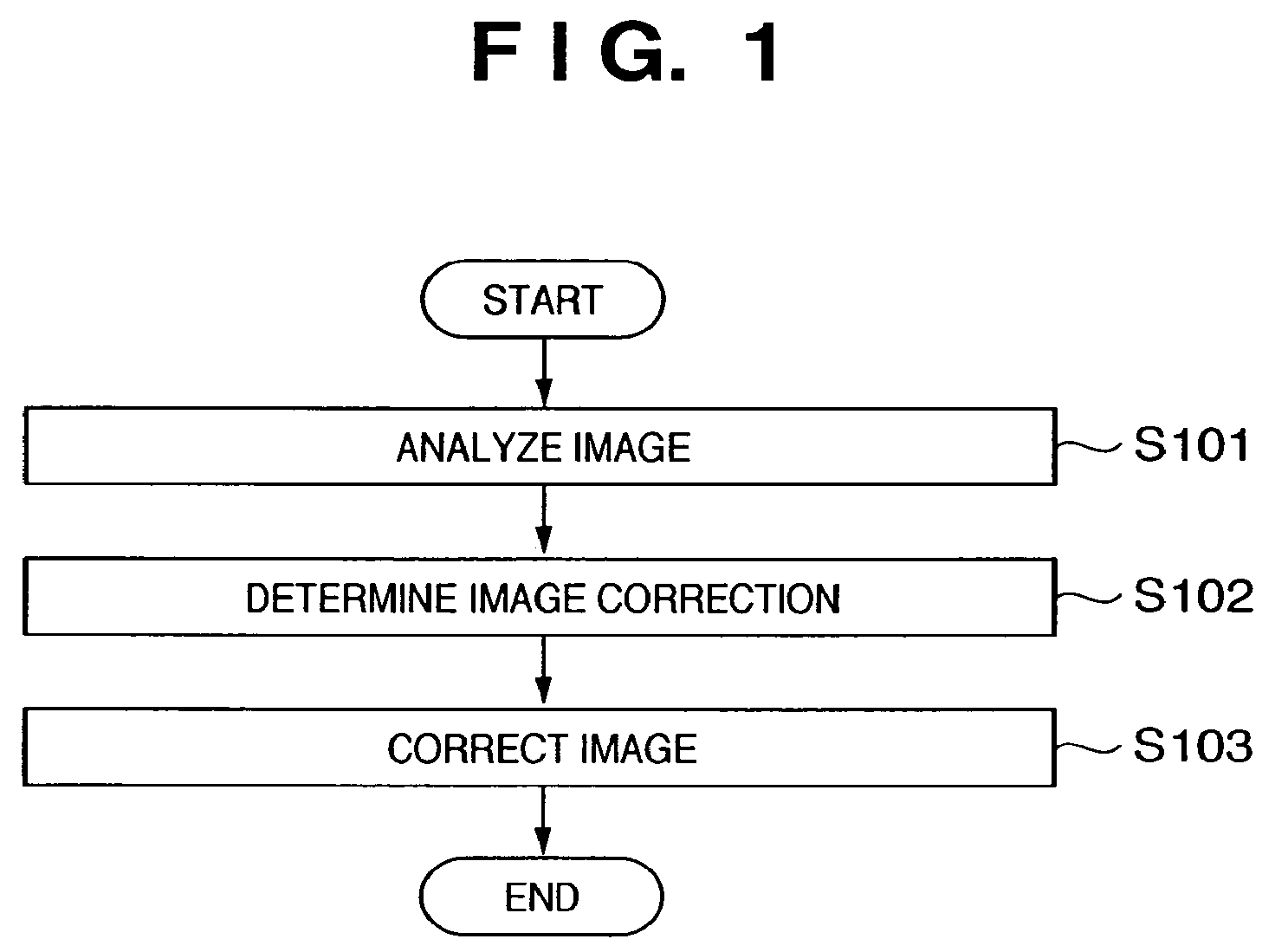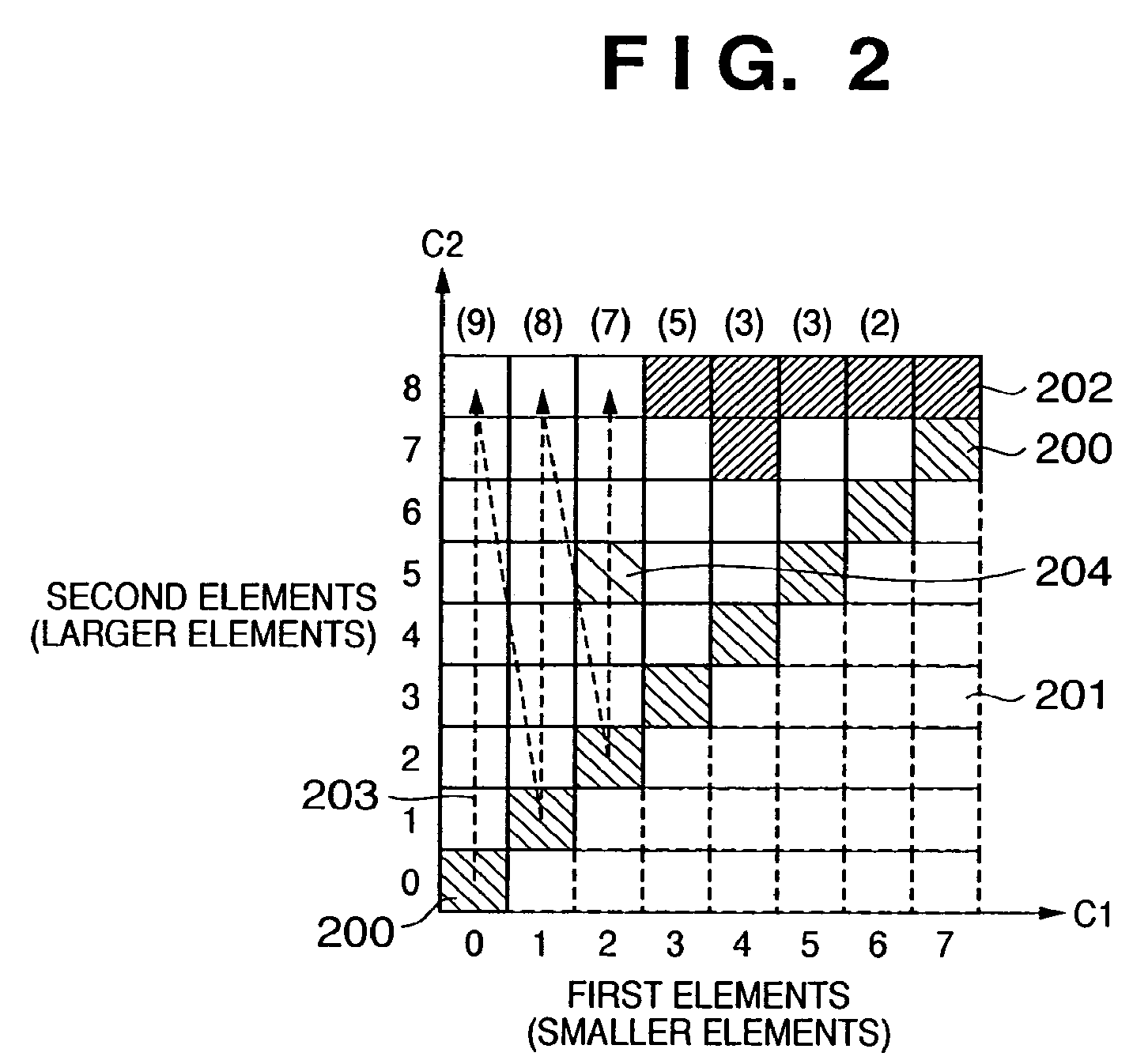Image processing apparatus, and color correction method and lookup table
- Summary
- Abstract
- Description
- Claims
- Application Information
AI Technical Summary
Benefits of technology
Problems solved by technology
Method used
Image
Examples
first embodiment
[0044]A method of obtaining the saturation in the YCC color space by utilizing the above-described principle will be explained.
[0045]Assume that a brightness and color difference signals for a 24-bit RGB image (8 bits for each color) are defined by
Y=0.3R+0.59G+0.11B
C1=INT[R−Y]
C2=INT[B−Y]
where INT[x] means converting x into an integer. If the color difference signal must have decimal-point precision, x is multiplied by an integer in advance in accordance with necessary precision. In the first embodiment, the right of the decimal point is simply discarded. In FIG. 3, the possible ranges of two color difference signals C1 and C2 are
−178≦C1≦179
−226≦C2≦227
The saturation is calculated by the root sum square, which does not depend on the sign apparently. Hence, an LUT suffices to be created for a hatched portion 300 in FIG. 3. The first embodiment assumes creation of an LUT in the region 300 above a straight line 301 having a slope of “1”. The maximum value of the absolute value of C1 is ...
second embodiment
[0054]The second embodiment of the present invention will be described as a method of obtaining the hue angle. The saturation described in the first embodiment apparently has symmetry. The hue angle H is given by
H=tan−1(C1 / C2)
and does not seem to have symmetry. However, from a different viewpoint, the hue angle H can be regarded to have symmetry. That is, the second embodiment utilizes the fact that the angle has periodicity and the trigonometric function has a certain sort of symmetry about a straight line having a slope of “1”.
[0055]An angle θ′ of a point Q (C2′,C1′) axisymmetrical about a straight line 600 having a slope of “1” can be calculated by (90°-0) using an angle θ stored in correspondence with a point P (C1,C2) in FIG. 6. Furthermore, the range is divided into eight regions (a) to (h) in accordance with the signs of the input values C1 and C2 and their magnitude relationship, as shown in FIG. 7. The hue angle of each region can be calculated as shown in FIG. 7 on the bas...
PUM
 Login to View More
Login to View More Abstract
Description
Claims
Application Information
 Login to View More
Login to View More - R&D
- Intellectual Property
- Life Sciences
- Materials
- Tech Scout
- Unparalleled Data Quality
- Higher Quality Content
- 60% Fewer Hallucinations
Browse by: Latest US Patents, China's latest patents, Technical Efficacy Thesaurus, Application Domain, Technology Topic, Popular Technical Reports.
© 2025 PatSnap. All rights reserved.Legal|Privacy policy|Modern Slavery Act Transparency Statement|Sitemap|About US| Contact US: help@patsnap.com



